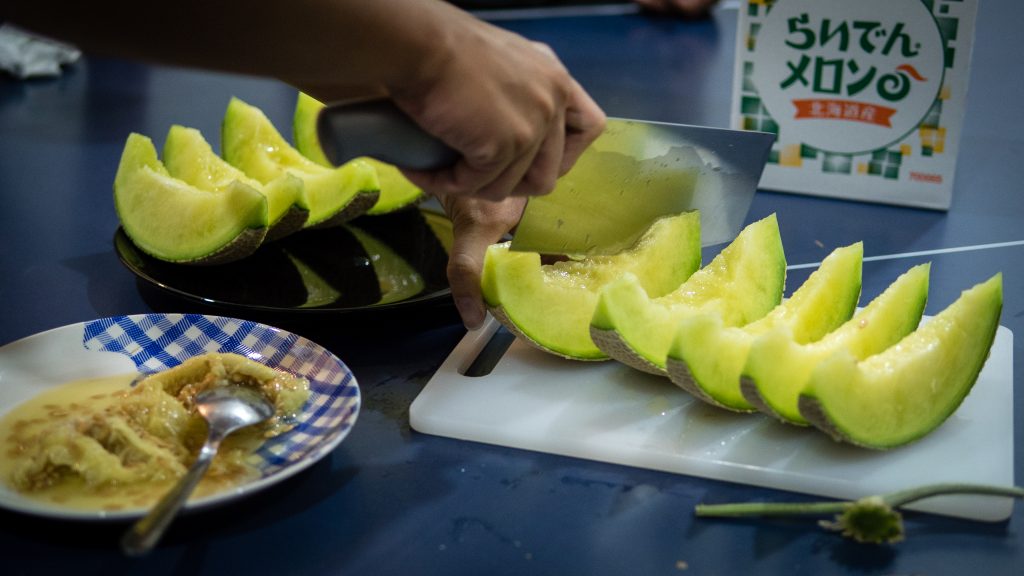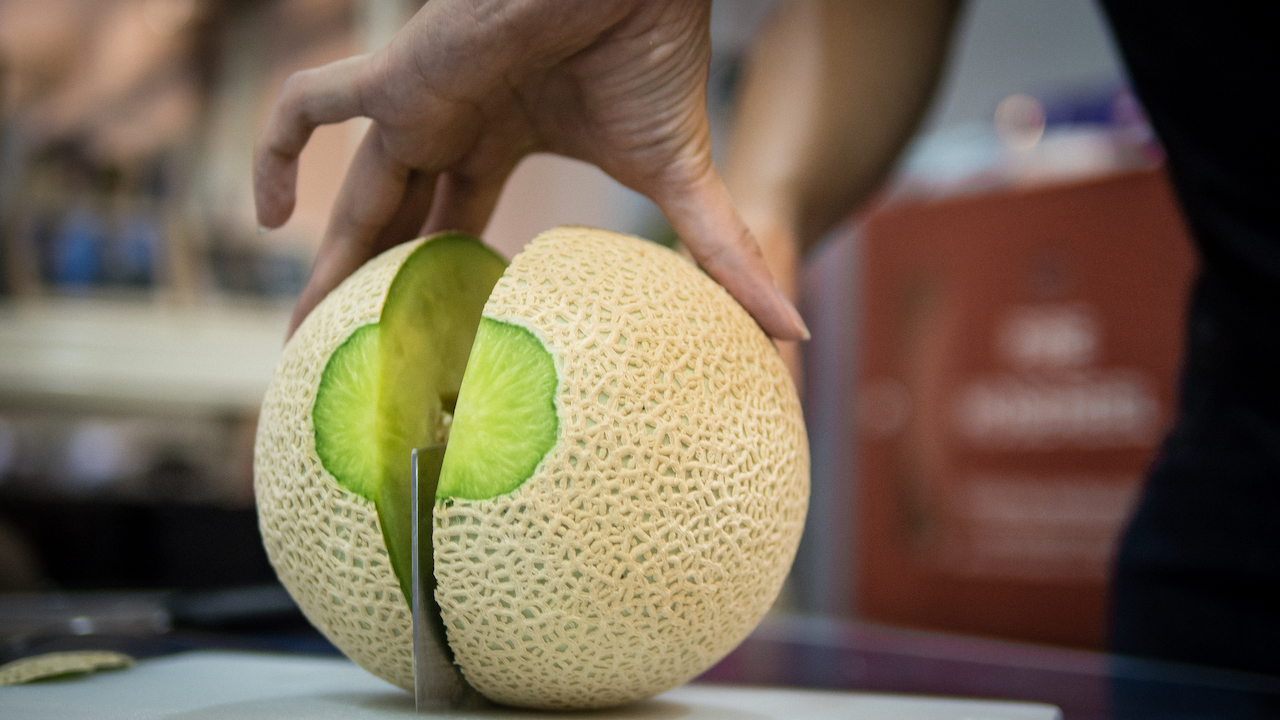It happened at the cashier, where I had just bought a melon. Not just any old melon, but the $158 king of melons, which was now rolling away from the till.
As it wobbled precariously on the edge, my heart paused, a scream died in my throat, and the cashier let out a yelp before leaping forward to steady it, which was moments from becoming Singapore’s most expensive floor stain.
Disaster averted. I carried Melonie home in her special box, all the while cradling her as if she were my firstborn child.

$158 is the largest amount of money I’ve spent on a single piece of food. For scale, MBS’s LAVO offers a one-pound Meatball at only $38, while Marco Pierre White’s Grilled Delmonico Steak (Black Angus) costs only $145, and purports to feed two.
$158 seems like an ungodly sum for a piece of fruit no bigger than my ex’s left boob. Yet the price is justified by pedigree.
Melonie was, of course, no ordinary melon from some one-tractor town outside Adelaide. She was from Shizuoka Prefecture in Japan, where they make an art out of elevating otherwise prosaic produce.
According to the website, she is a Shizuoka Crown Melon, a type of Muskmelon which traces its ancestry back to Japan’s Taisho period (1912 -1928), when it was known as an ‘Earl’s Favourite’.
Melonie-san thus grew up under the strict supervision of skilled Japanese artisans, who kept her in a ‘separate soil bed’ and monitored her daily sunlight, water, humidity, and fertiliser intake by computer. One tree is only allowed to bear one fruit, and the growers are said to “put all their efforts to grow melons with love as if they are raising their own children”.
After being inspected by ‘dedicated examiners’ and stamped with her namesake ‘crown’, Melonie left Japan, where she no doubt graduated with first-class honors from Christchurch College, Oxford; married Prince William, and adopted three Cambodian orphans named Mel, Melonia, and Melonie Jr.
I’m joking, of course, but only about her first-class degree. Some of her siblings did actually marry into the Royal Family.

Did I see God after eating it?
The answer, to our surprise, is a resounding yes.
This is one truly excellent melon.
Even if its exterior looks entirely ordinary and betrays nothing, it’s what’s inside that counts. And what’s inside is, in my opinion, worth every last dollar because you can taste the ‘outstanding virtuosity’ of those consummate Japanese agriculturalists.
When I cut into the melon, the juice ran down my knife in such volumes (and stickiness) that I had to get a whole roll of paper towels. But even with the estuaries of melon nectar on the table, between my fingers, and watering the keyboard of my laptop, there was still plenty left in the fruit’s soft flesh.
And what flesh! You get nothing of the mealy or fibrous quality which afflicts more plebeian fruits. The green melon flesh dissolves, or rather, bursts on your tongue like salmon roe, releasing a juice that is so sweet, and so crisp that everyone eating it felt weirded out.
Some people compared it to a jelly whilst others used the adjective ‘creamy’, but almost everyone agreed that the experience was unreal. The melon’s taste and aroma is so intense that it feels almost artificial, like an impossible, platonic ideal of Melon, or some sort of Melon Essence distilled in a scientist’s lab.
Except it’s real.
In other words, it tasted more melon-y than any real melon had any right to be in our fallen, imperfect world. The only problem was there was not enough of it. Though Melonie was extremely sweet, its sweetness isn’t cloying (like a 100% sugar Gong Cha) or sickening (like too many Mangosteens), so everything was gone in just a few short minutes of feeding frenzy.

I believe those people misguided. We think nothing about spending more than a $100 for a Dry-Aged Porterhouse at Wolfgang Puck’s, or even hundreds more for premium Shark’s fin, so why are the rules somehow different for fruit? The same amount of effort has clearly gone into the cultivation of our Melon, and I—amongst many—can attest that it provides just as much gustatory delight as a good caviar or abalone.
So whether you believe in the subjective theory of value, or the more antiquated Labour theory of value, $158 seems not cheap perhaps, but fairly reasonable.
I think also that the problem lies in fruit’s history. Fruit producers often grow cultivars that produce tough fruits that are not as tasty, but can withstand longer journeys or are more resistant to the diseases that impair mass production. After all, the ubiquitous ‘Cavendish’ Banana you see on every supermarket shelf is not the sweetest or creamiest banana, merely the one that’s firm enough to transport around the world and most capable of surviving Panama Disease—the SARS of Bananas which wiped out the previous top banana, the ‘Gros Michel’.
As a result, we spend a lifetime eating fairly plain fruits, thus forming a rather limited view of what an apple or a banana can be. This is not wrong, but it’s a little sad that we expect less of fruit than we do from other foods.
For an eye-watering sum of $158, you can rediscover some of the lost magic of fruits. It won’t give you knowledge of good and evil, but it’s certainly the best a Melon can be: a tiny, compact little ball of paradise briefly regained.





